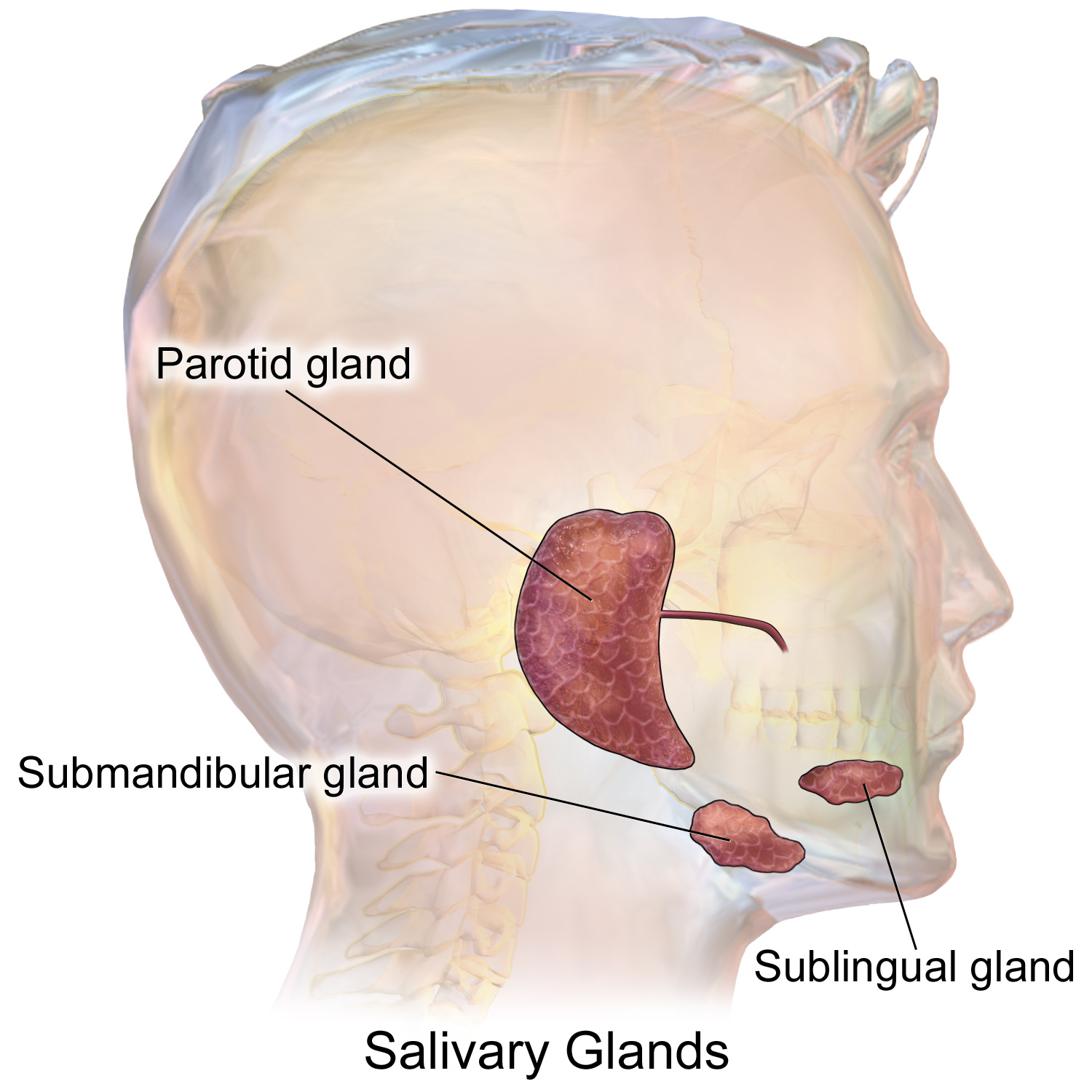


Larry was enjoying dinner at home when halfway through the meal his wife said, “What’s that?”
“What do you mean?”
“I mean there’s lump on the right side of your face and it’s getting bigger”
Larry put his fork down, got up from the kitchen table and walked to the mirror in the bathroom with his wife close behind. Sure enough, the right side of the face was swollen, in front of the ear and at the angle of the jaw. It felt warm, soft, looked a little red and didn’t hurt.
By the time he was examined in the emergency room of the hospital that evening, he experienced mild pain on the right side of the face that was gradually getting worse. The doctor diagnosed Larry’s problem as blockage and inflammation of the parotid gland and duct.
He explained, “The parotid gland is one of the salivary glands that makes saliva. It’s located in front of the ear and in the cheek. And it’s connected to the inside of the mouth by a tiny tube called the parotid duct. This tube carries saliva and digestive enzymes that help to break down food in the mouth.
“When the tube becomes obstructed, for instance, by inflammation or blocked by tiny stones, the parotid gland starts to swell as if you’re blowing up a balloon. There are several reasons why this can happen.
“I suggest you take this medication and make an appointment to see your doctor to rule out other causes for this problem. Also, drink lots of water, massage and apply heat to the area. If you continue to have pain, take medication such as acetaminophen.”
Salivary glands make saliva. They secrete more than a quart of saliva a day that contains enzymes that helps with swallowing and digesting sugars and starches. The saliva also contains mucus which lubricates the mouth and together with the enzymes in the saliva help protects your teeth from bacteria and developing cavities.
Sialadenitis is an inflammation of a salivary gland. The inflammation can happen suddenly or be a chronic or recurrent condition. There are three major salivary glands.
Although sialadenitis affects people of all ages, the elderly and chronically ill are more susceptible to this condition. It most often involves the parotid and submandibular glands with the parotid gland being the largest of the three salivary glands as depicted in the picture below…

Dehydration, stones, infections, medications or sickness can reduce the flow of saliva from the parotid gland into the mouth. As a consequence bacteria from the mouth can backflow across the parotid duct towrds the parotid gland increasing the risk of infections.
Pain, swelling and redness located in front of the ear are common symptoms caused by obstruction of the parotid duct. The pain and swelling may come on suddenly and affect the TMJ making it difficult to open and close your mouth.
The pain usually gets worse during eating since the parotid gland makes more saliva while eating and it cannot exit into the mouth because of the obstruction. You may complain of a dry mouth, bad breath or a bad taste in your mouth. If the condition becomes chronic, you might experience acute flare-ups with pain free intervals.
Most of the time a history and physical examination will be enough to make the diagnosis. If treatment doesn’t resolve the infection in a few days, diagnostic testing is warranted. A CT scan can visualize stones and give information as to whether there is an abscess or possibly cancer in the parotid gland. A sialogram is an x-ray done with a special contrast material to determine if there is a stone or constriction in the parotid duct. Laboratory tests can be helpful.
Most cases of sialadenitis are due to viral or bacterial infections. For mild cases of a swollen parotid gland, apply warm compresses to the area, massage the area from the ear towards the nose, drink lots of water, rinse your mouth and suck on sugar free lemon candy to make more saliva.
For more severe cases, antibiotics are indicated and a soft diet may help. Also, use the recommendations for mild cases. For minor parotid discomfort, acetaminophen or ibuprofen will suffice. If your condition is deteriorating — call your doctor!
A surgical procedure may be needed to remove the stone that’s blocking the parotid duct or drain an abscess in the neck. Salivary infections can dive into the deep tissues of the neck causing difficulty in swallowing and breathing — and can be life-threatening. Do not hesitate to see your physician if you have this problem.
This article is intended solely as a learning experience. Please consult your physician for diagnostic and treatment options.